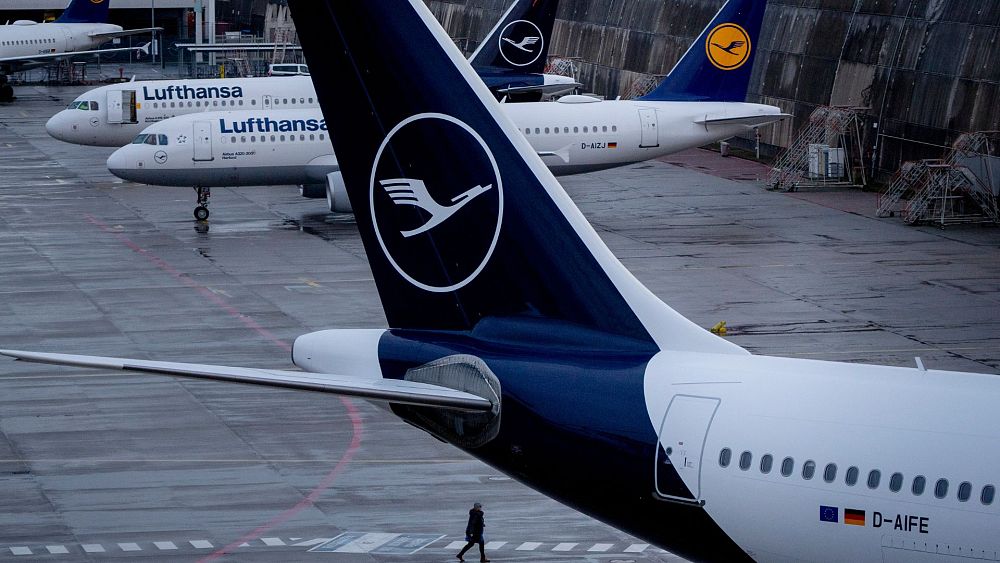The number of people taking domestic flights is dropping across Europe as travellers opt for more sustainable options.
‘Flight shame’ seems to be working - at least for short-haul trips within a country’s borders.
According to new Eurocontrol data, 38 per cent fewer domestic flights took off in Germany in 2022 than in 2019.
In Lithuania and Finland, such trips declined by 38 per cent and 35 per cent respectively.
The drop can be attributed to “environmental pressure,” the Eurocontrol report suggests.
So which European travellers are swapping planes for trains?
Which European countries have seen domestic flights drop?
Germany, Lithuania, and Finland experienced the biggest drops outside of war-torn Ukraine, which recorded an 87 per cent decrease between 2019 and 2022.
But the downward trend was fairly consistent across the continent.
The UK recorded a 25 per cent decrease in domestic flights.
Austria (-32 per cent), Sweden (-27 per cent), Switzerland (-20 per cent), Croatia (-19 per cent) and Ireland (-17 per cent) also experienced significant drops.
France saw a 15 per cent decrease, while Portuguese and Spanish domestic flights dropped seven and six per cent respectively.
The only significant increase was in Hungary, where domestic flights surged 56 per cent on 2019 levels.
Why did domestic air travel drop across Europe?
As the climate crisis bites, the sentiment is turning against unnecessary flying.
France and Austria have banned short-haul domestic flights where a train journey is available.
Many governments are heavily subsidising train travel.
Eurocontrol attributed part of the drop to “Spain, Germany and Austria proposing cheap train ticket deals.”
Last summer, Germany introduced a heavily discounted public transport pass. It gave travellers unlimited use of local and regional services for just €9 a month. Spain invested more than €700 million on a free-ticket scheme, offering travellers free long and short haul tickets.
Investment continues. Last week, Germany’s government voted to invest €45 billion into Deutsche Bahn - the national rail provider - by 2027.
What about international short haul flights?
It’s good news that the number of domestic flights is dropping.
Including flights between European countries, there were fewer flights in 2022 than in 2019, the last pre-pandemic year.
“Compared to 2019, there was still a traffic gap of 16.7 per cent in 2022 which corresponds to 4,989 fewer daily flights in the network,” the Eurocontrol report reads.
But air traffic within Europe is set to grow, surging by four per cent a year from 2025 onwards. It is likely to exceed 2019 levels by 2029, Eurocontrol estimates.
Is train travel better for the planet than flying?
Shunning air travel is a great way to reduce your carbon footprint.
An economy class return flight from London to New York emits around 1.48 tonnes of CO2 per passenger, according to Flight Emission Map carbon calculator - more than double the average person in Ghana produces in a whole year.
But with Europe’s rail revival in full swing, giving up flying doesn’t mean giving up holidays. Check out these amazing train journeys for inspiration.
Planning journeys in Europe by train is easier than you might think. Follow this train travel expert’s advice.


